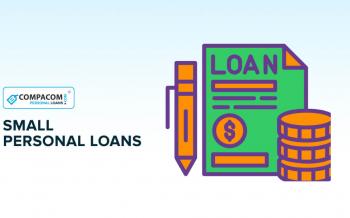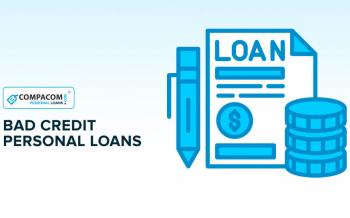What is a TSP Loan?
A TSP loan, or Thrift Savings Plan loan, is essentially a personal loan available to specific individuals. Who are these individuals? They're the dedicated federal employees and our nation's uniformed service members. Imagine having a savings pot for your retirement. Now, think about being able to dip into this pot when you're in a financial bind. That's precisely what a TSP loan lets you do. Instead of turning to banks or high-interest lenders, you can borrow from your own retirement savings. But remember, it's not free money. Like any loan, you're expected to pay it back, with interest, over time. It's designed as a helpful tool for those moments when life throws a curveball and you need quick financial relief.
However, there's another option to consider – allotment loans for federal employees. While a TSP loan allows you to borrow from your retirement savings, an allotment loan is typically an installment loan where repayments are automatically deducted from the borrower's paycheck. So, while both offer financial assistance, they differ in sources and repayment methods.
It's crucial to know the nuances. TSP loans come from your retirement stash, which means you're essentially borrowing from your future. Allotment loans, on the other hand, are separate from your retirement funds but come with the convenience of automatic paycheck deductions.
Ad
How TSP Loans Work
Dipping into your retirement savings might sound daunting, but TSP loans are structured to be straightforward. Let's break down the process:
- Eligibility. First and foremost, not everyone can grab a TSP loan. You must be a federal worker or a uniformed service member with a Thrift Savings Plan account in good standing.
- Borrowing Limits. There's a cap on how much you can borrow. This isn’t an endless tap; it's meant to address pressing needs without draining your retirement.
- Application Process. It's not as tedious as traditional bank loans. Typically, you'll apply through your TSP account, selecting the loan amount and purpose.
- Repayment. Here's where things differ from other loans. You're paying yourself back with interest. These repayments refill your TSP account, ensuring you're not left high and dry in your retirement years.
- TSP Loan Rate. TSP loans have competitive interest rates, often lower than many personal loans. The catch? The interest you pay goes back into your own account.
- Loan Term. The duration to repay the loan varies. For instance, a home purchase might have a longer term compared to a general-purpose loan.
- Potential Consequences. Borrowing from your TSP isn’t without risks. If you default or don’t adhere to the terms, there can be tax implications or penalties.
In summary, a TSP loan offers a flexible solution for those in a financial pinch, allowing them to use their retirement savings as a temporary safety net. But, as with all financial decisions, it’s essential to weigh the pros and cons and consider your long-term financial health.
TSP Loan Eligibility Criteria
Before considering a TSP loan, it's crucial to determine if you qualify. Here are the key eligibility requirements:
- Contribution Minimum
Your TSP account must hold at least $1,000 of your own contributions. This ensures that you've built up a substantial amount before borrowing against it.
- Prior Loan Repayments
If you've recently repaid a TSP loan of the same type, you'll need to wait. Specifically, a gap of at least 60 days is required before taking out another loan of the same category.
- Active Pay Status
To secure a TSP loan, you must be actively receiving a paycheck. This is because your TSP loan repayments will be automatically deducted from it.
- Taxable Distribution History
If you've experienced a taxable distribution on a previous loan in the last year, it could affect your eligibility. The only exception here is if that distribution was linked to your departure from federal service.
- Limit on Concurrent Loans
At any given time, you can only have one general-purpose TSP loan and one residential TSP loan per account. It prevents over-leverage of your retirement savings.
- No Court Orders
Your TSP account should be free from any court orders. If there's a legal claim against your account, you won't be eligible.
Remember, while the TSP loan provides a safety net for pressing financial needs, it's vital to ensure that you meet these criteria before applying. This way, you make informed decisions and safeguard your future financial health.
TSP Loan Application
The TSP loan application process is designed to be user-friendly for eligible federal workers and uniformed service members. If you're thinking of tapping into your Thrift Savings Plan, here's how the application unfolds:
- Start by logging into your TSP account. Navigate to the 'Loans' section where you can initiate the loan application process.
- Decide on the amount you wish to borrow. Ensure it meets the TSP loan limits and doesn’t exceed your available balance.
- Specify the purpose of the loan. As mentioned, you can have one general-purpose loan and one residential loan at a time. The purpose affects the repayment terms, so choose accurately.
- Before confirming, review the interest rate attached to your TSP loan. The silver lining? The interest you pay goes back into your TSP account.
- Since repayments are automatically deducted from your paycheck, you'll need to determine the repayment frequency and amount. This ensures you can comfortably manage the repayments without straining your monthly budget.
- Go through the terms and conditions thoroughly. Understand the implications of non-repayment or early repayment, if any.
- Once you're sure, submit your application. The TSP system will review it, and if everything is in order, you'll be notified of your loan approval.
- Upon approval, the funds will be disbursed either via direct deposit or check, depending on your preference or the specifics of your TSP account.
Ad
How Much is a TSP?
Understanding how much you can borrow from your Thrift Savings Plan (TSP) is crucial before taking the plunge. The amount is not arbitrary; it's based on specific criteria to ensure you don't jeopardize your retirement future. Here's how to determine your potential TSP loan amount:
- Minimum Loan Amount. The smallest amount you can borrow is $1,000. This ensures that the administrative process of initiating a loan is justified.
- Maximum Loan Amount. The maximum you can borrow is determined by your account balance. You can typically borrow up to 50% of your vested account balance or $50,000, whichever is less. However, the exact amount also depends on any existing TSP loans you might have.
- Existing Loans:.If you already have an outstanding TSP loan, the amount you owe on that loan is subtracted from the maximum you're eligible to borrow. For example, if your maximum allowable loan is $30,000 and you already owe $10,000 on an existing loan, you can borrow up to $20,000.
- Loan Purpose Matters. For a general-purpose loan, you can borrow for any reason, but the repayment term is generally up to 5 years. On the other hand, residential loans, intended for building or purchasing a primary residence, can have a repayment term up to 15 years.
- Your Own Contributions. You're borrowing against your contributions and their earnings. You can't borrow against funds that your employer has matched or contributed until you're vested in those funds.
- Service Limits. If you're closer to retirement or separating from service, this might affect the amount you can borrow, as you'll have a limited time frame for repayments.
TSP Loan Benefits and Considerations
When deciding on a TSP loan, it's essential to weigh the pros and cons.
|
Benefits |
Considerations |
|
Competitive Interest Rates: Typically lower than personal loans, ensuring affordability. |
Future Retirement Funds: Borrowing can reduce the money available in retirement due to missed compound growth. |
|
Convenient Repayments: Deductions are automatic from your paycheck, minimizing the risk of missing a payment. |
Repayment Pressure: If you leave your federal job or retire, the loan may need to be repaid in full quickly. |
|
Flexibility: Use the funds for various needs, from home purchases to unexpected expenses. |
Tax Implications: Defaulting could result in the loan amount being considered a taxable distribution. |
|
Pay Yourself: The interest paid on the loan goes back into your TSP account. |
Loan Limits: The amount you can borrow is restricted, potentially not covering larger expenses. |
|
No Credit Check: Your credit score isn't a determining factor, ensuring wider accessibility. |
Opportunity Cost: Borrowed funds aren't invested, so you might miss out on potential market gains. |
When considering a TSP loan, individual circumstances, financial goals, and the current economic environment should also factor into your decision.
When Should You Get a TSP Loan?
Opting for a TSP loan is a significant decision, intertwining your present financial needs with your future retirement security. Before going down this route, it's essential to assess when it's genuinely appropriate to take such a loan. Here are some scenarios where a TSP loan might make sense:
- Urgent Medical Expenses. If you or a family member faces a sudden medical emergency, and you don't have enough savings or insurance to cover it, a TSP loan can be a lifeline.
- Home Purchase or Renovation. Using a TSP loan for a down payment on a primary residence or to fund essential home repairs can be strategic, especially if it saves you from higher interest loans elsewhere.
- Debt Consolidation. If you're burdened with high-interest debt, like credit card balances, it might make financial sense to use a TSP loan with its lower interest rate to consolidate and pay off that debt.
- Education. Investing in yourself or your child's higher education might be worth the temporary dip into your retirement savings, especially if it leads to better earning opportunities in the future.
However, there are also times when a TSP loan might not be the best choice:
- Luxury or Non-Essential Purchases. It's not advisable to tap into your retirement for vacations, gadgets, or other non-essentials.
- Investments. Using TSP funds to invest in stocks, start a business, or buy property for speculation can be risky.
- As a Habit. Regularly relying on your TSP for financial shortfalls indicates deeper financial planning issues that need addressing.
Alternatives to a Thrift Savings Plan Loan
While a TSP loan offers a way to tap into your retirement savings for immediate needs, it's not the only solution available. Here are some alternatives with their advantages and drawbacks:
- Allotment Loans for Government Workers
Pros:
- Easy Access: Designed specifically for federal employees, these loans often have simpler application processes compared to traditional loans.
- Fixed Repayments: Payments are automatically deducted from your paycheck, ensuring timely payments.
Cons:
- Higher Interest Rates: These can come with rates higher than some other loan options.
- Potential Debt Cycle: If not managed well, borrowers might find themselves in a cycle of recurring debt.
- Personal Loans
Pros:
- Versatility: Can be used for a variety of purposes, from debt consolidation to home repairs.
- Fixed Terms: You know exactly how much you owe each month and for how long.
Cons:
- Potential Fees: Some personal loans come with origination or early repayment fees.
- Home Equity Loans
Pros:
- Potentially Lower Rates: Secured against your home, these often come with lower interest rates than unsecured loans.
- Larger Loan Amounts: Can borrow against the equity you've built in your home.
Cons:
- Risk to Home: If you default, you risk losing your home.
- Closing Costs: There might be fees associated with setting up the loan.
- Savings or Emergency Funds
Pros:
- No Debt: Using your own saved money means you aren't taking on debt.
- No Interest: No need to worry about interest rates or repayments.
Cons:
- Depletes Savings: Using savings can leave you without a financial safety net for future emergencies.
The Bottom Line
A TSP loan can be a handy tool for federal workers needing quick cash. But remember, you're borrowing from your future self's retirement money. Always think about today's needs and tomorrow's goals. If unsure, chat with a financial expert. Making smart choices now ensures a better future.








You are about to post a question on compacom.com:
Any comments or reviews made on this website are only individual opinions of the readers and followers of the website. The website and its authors team are not responsible, nor will be held liable, for anything anyone says or writes in the comments. Further, the author is not liable for its’ readers’ statements nor the laws which they may break in the USA or their state through their comments’ content, implication, and intent.